15 Feb What is the best flash for macro photography?
When it comes to photographing live, fast moving insects or spiders, mostly small species, in the field, a flash is crucial to capture sharp and in-focus macro images.
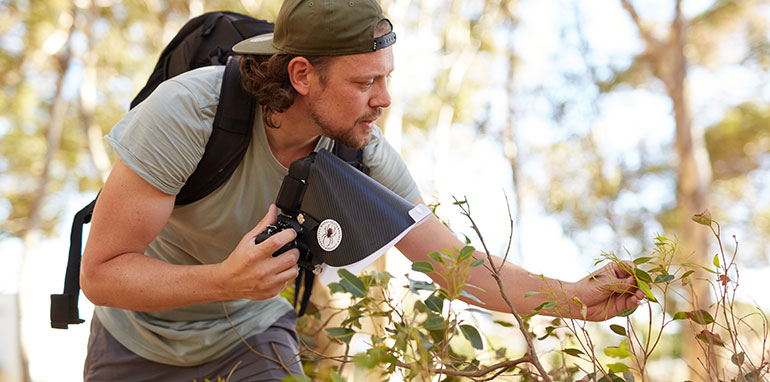
What features does a good flash for macro photography need?
One of the biggest benefits of using a flash for macro photography is being able to freeze motion.
Also, since we are in the field in most cases, having a flash that is both compact but strong at the same time, would be great.
Some flashes even come with a built-in modelling lamp, which can act as focusing light, for night photography.
Generally speaking almost every flash can be used for macro photography, but there are some technical specs, that make one more ffective than the other.
The most important features being a short flash recycle time and the available power (and also the ability to dial down the power as low as possible).
The different types of macro photography flashes
Since we are looking for a versatile light source, an LED light will not be an option as it can not freeze motion of moving subjects.
For static subjects, like funghi, plants or dead objects though, an LED light source might work just perfectly.
When it comes to flashes, there are basically 3 different types:
Classic Speedlite / flash (for on-camera use)
The most common flash lighting solution for macro photography is the classic speedlite, a single unit sitting on the camera hotshoe.
A standard flash offers plenty of power and is one of the best developed and tested pieces of gear you can buy.
However, to become really effective for high magnification macro photography, where the subjects are often only a few centimeters or even millimeters in front of the lens, it needs some customization.
Naturally the flash, in its elevated position, would shoot over our subjects, so we need to find a way to direct the light downwards towards the front of the lens.
Additionally we would need to add some diffusion to prevent harsh highlights and spread the light even more.
This can be done with a special macro diffuser, that solves both the directing and the scattering/diffusion issue.
You can read more about macro diffusers here.
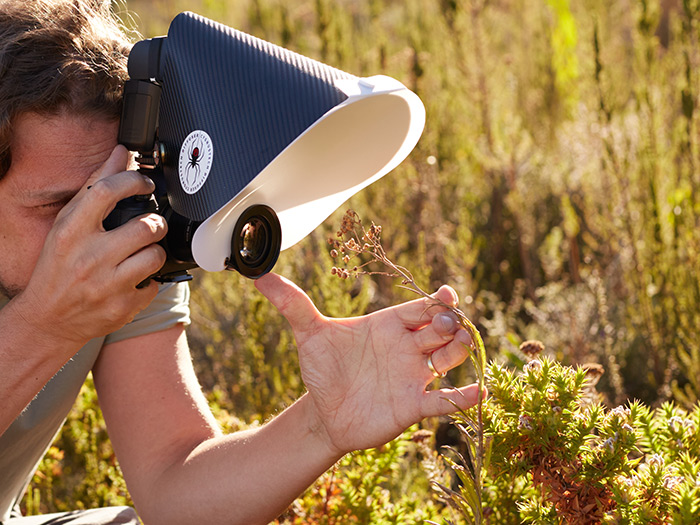
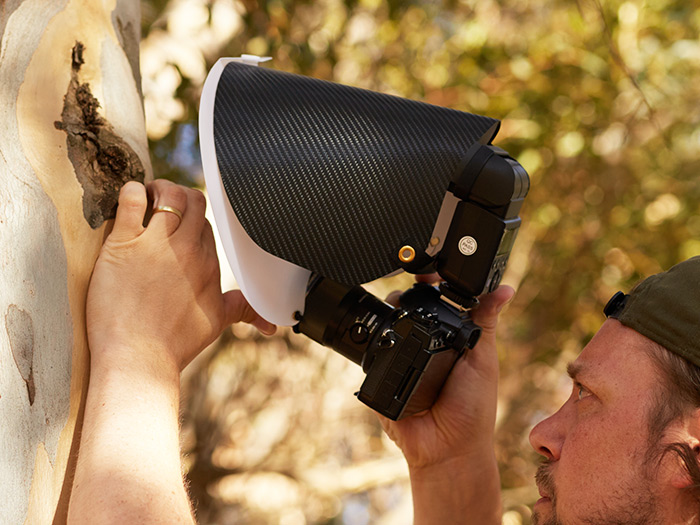
Combined with a diffuser, the classic speedlite flash is my recommended choice of a light source for flexible macro photography.
Adding an MF12 (or two) to the mix gives almost endless creative freedom to lighting scenarios.
It is also possible to use a speedlite off-camera of course.

Ring flash
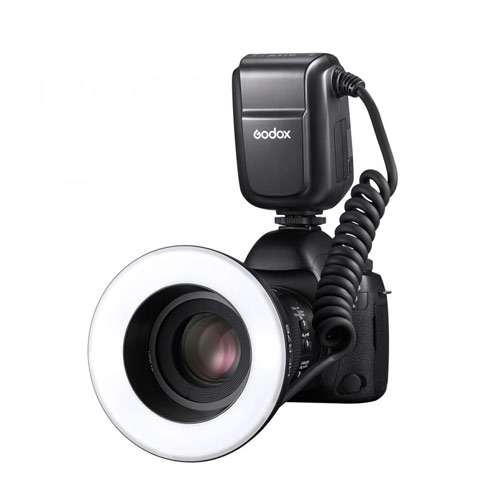
While ring flashes also have their advantages, i have one major gripe about them, when it comes to macro photography of insects or spiders: their reflection tends to look very unnatural and noticeable on shiny or reflective surfaces.
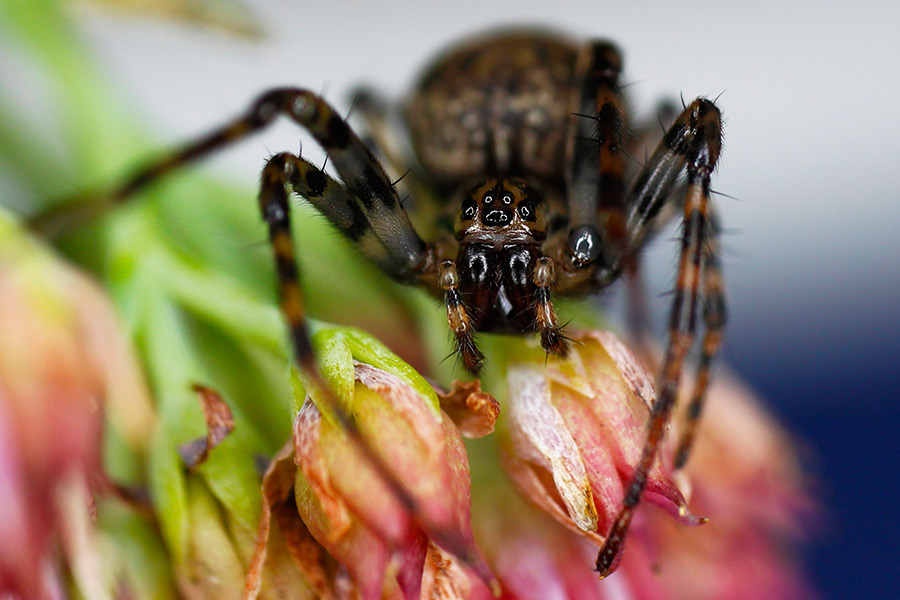
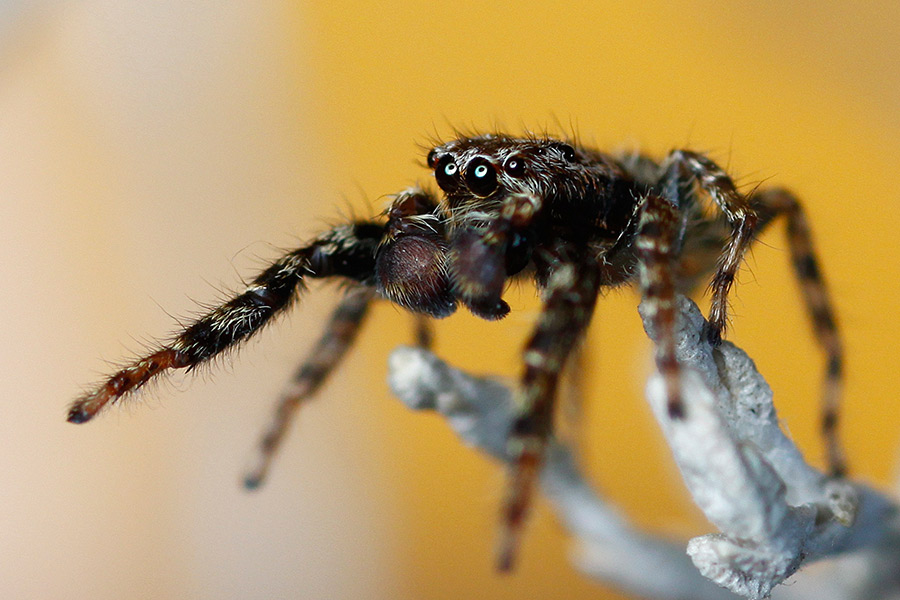
A classic flash, combined with a maco diffuser, creates a considerably more pleasant and subtle reflection – even though it is bigger.
Adding additional diffusion to a ring flash can be very tricky, too.
Twin flashes and other individual flashes
The best known examples for twin flashes are most probably the Canon MT-26EX , Nikon RC1, Olympus STF-8 and the Laowa Kuangren KX-800.
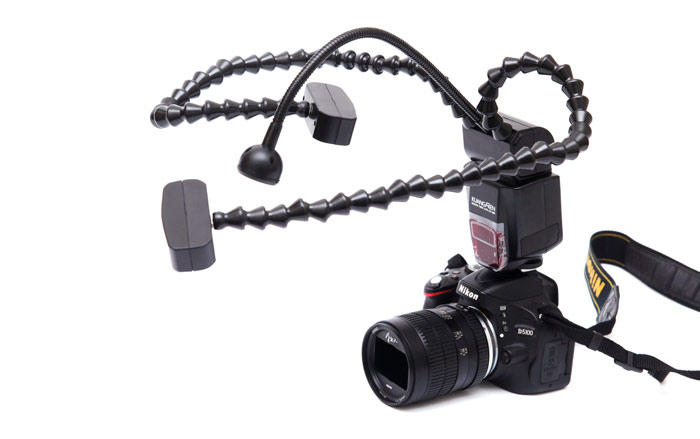
While some of them have their flash heads attached to a filter ring holder and hence are very close to the lens front, others sit on flexible arms and give more freedom when it comes to positioning them.
Having the flashes close to the front lens element brings advantages and disadvantages at the same time.
We have the light closer to the subject and lose less power, but diffusing it can be more challenging, than diffusing an on-camera flash.
There are some customized diffuser however, that are designed specifically for twin flashes.
Check out the diffuser models of AK Diffuser and Macrodiffuser by Trickbits to name a few.
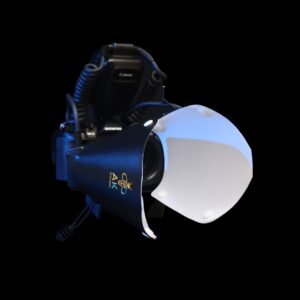
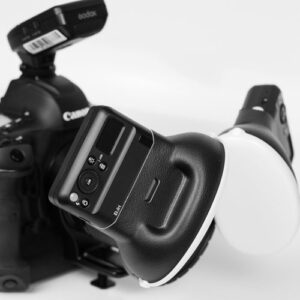
There are also some unique and creative macro lighting solutions available, like the Godox MF12.


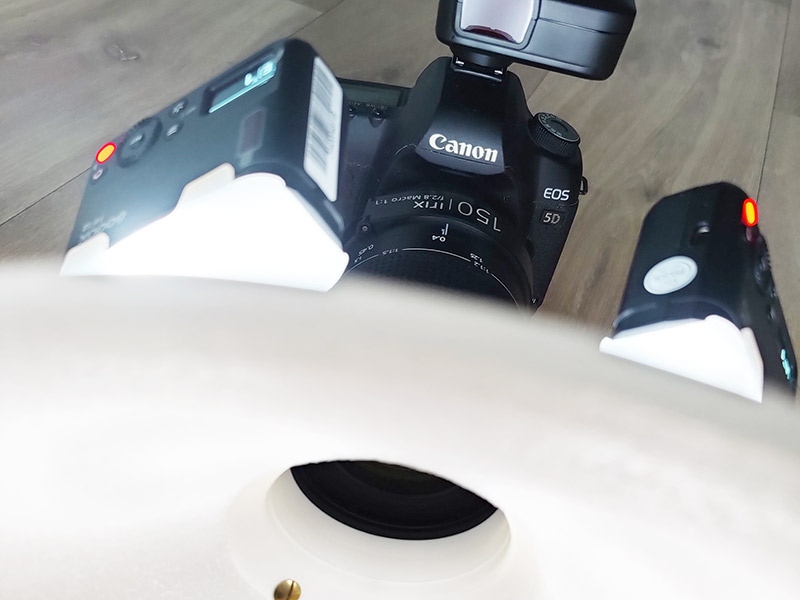
The Godox MF12 is a very compact, external flash, that will mostly be triggered wirelessly via radio signals.
It can be used on or off camera in various variations.
With a specific filter ring several MF12 units (up to 4) can be used similar to a twin flash, close to the lens front element.
I like to use them for backlighting for example, off camera and trigger them with my main spedlite (Godox V860III) that sits on the hotshoe of the camera.
Why i think the Godox V series flashes are the best option for macro photography
When we are looking at just the flash power, almost any flash could work for flash supported macro photography.
The recycle times though, which are very important for focus bracketing and focus stacking, are generally better with more expensive models from the renowned brands.
What really sets a great flash for macro photography apart from the broad field of competitors, are the extra features and innovative functions.
Intuitive handling and usability is another component, which i consider to be important.
The Godox flashes of the V series have all that – and more – in my opinion.
There are unique and innovtive inventions like the MF12, or features, like the modeling light, that come in handy for night photography.
But what really makes them my number 1 choice for ultimate macro flashes is their Li-ion battery.
No more carrying around several sets of AA-batteries – only 1 battery block, that can be recharged and provides a stable and effective power output.
If you want to read more about the V series flashes, check my article here.
The best flash for macro photography currently: Godox V860III
Looking at the list of requirements and features, the Godox V860III packs all of these, and has one feature that sets it apart from the many competitors:
Its Li-ion battery.
When it comes to photographing focus brackets for stacking, big ones in particular, with the flash firing several dozen times in a short period, the stable power output from the Godox flash is more reliable than from flashes that are powered with batteries.
Even when these batteries are designed for flash use, like the eneloop pro for example.
Another big plus is the modelling/focusing light, which is sitting in the flash base.
When using a macro diffuser on the flash, the focusing light helps to find the tiny subjects in the viewfinder and is also a big helper for night macro photography.
You can find and read my extensive review of the Godox V860III here.
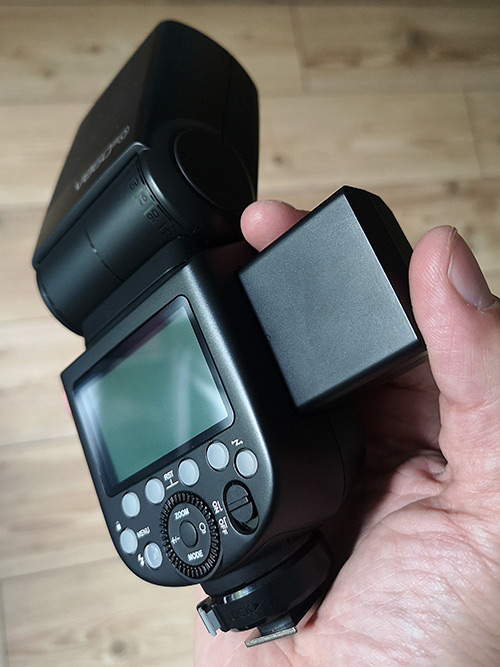
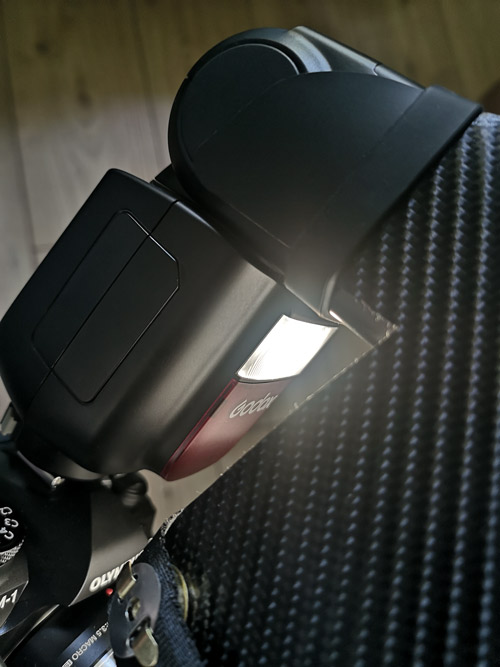
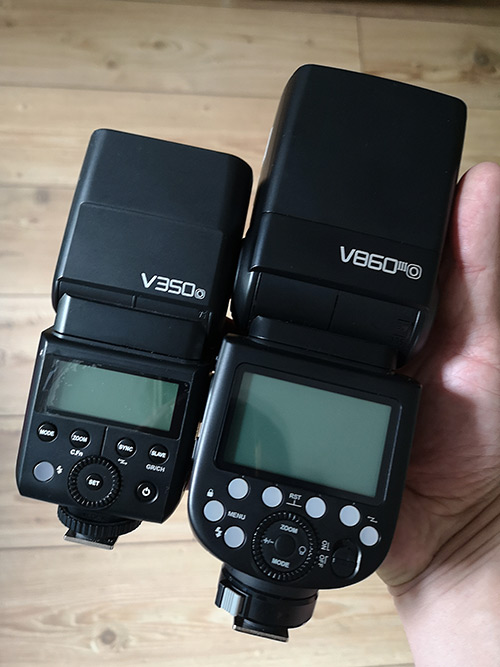
Tip: for the focusing light to integrate perfectly with a diffuser, it is important that the diffuser either has no blackplate, or a cutout for the light.
For the V1 this does not apply, as its focusing light is placed in the flash head itself.
Flashes i have reviewed so far:
Buying the Godox V860III
You can buy the Godox V860III at Foto Koch here, for 193 Euro currently.
By buying this product via this link, I will get a small commission which helps me to keep this website running.

Sign up for the newsletter mailing list & free ebook

Did you enjoy these tips and want to learn more or improve your macro photography skills?
Stay up to date with new blog posts, reviews and tutorial- and ebook-releases.
Sign up below to get notified when the free edition of my ebook
‘How to master spider & insect macro photography’ is ready for download.



Ben
Posted at 16:35h, 23 MarchI would suggest you review & check out the Wescott FJ80 II. That is an excellent flash, fast recycle, li-ion, and all the pro level features one could ask for. Great article btw!
wildmacro-chris
Posted at 13:11h, 25 MarchHi Ben, the FJ80 II certainly looks interesting, a lot like the Godox V1, but i like how can can simply attach the battery to the front instead of sliding it into the flash body. I´ll see if i can get a sample for review and comparison. Thanks for the feedback.
Avi stiel
Posted at 05:44h, 05 OctoberHello and thank you for creating this article
I am new to macro so i will try make it short
I bought the godox mf 12 and like to know
And have a nikon Z9 though i got feedback
From macro photographer and like to be sure
That this is a good flash .
I took some shots at night and the feedback was not very good and perhaps the technique i used is not. Goood enough
I took the shots with the coming diffuser of the nikon
They also have a diffuser for dental photography
So overall question for me is if this flash hood for macro (i have 2 flashes)
Second question is if to buy the big diffuser for macro
Thank you
wildmacro-chris
Posted at 20:44h, 05 OctoberHi Avi, it is not easy to answer your question as there is a lot of info missing to get a real idea of the problem. I will answer your email, which you sent, and try to give you more feedback and infos there.